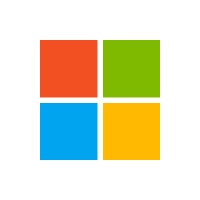Microsoft Unveils Face Check: A New Era in Corporate Security
August 14, 2024, 6:22 am
In a world where identity theft lurks around every digital corner, Microsoft has stepped up its game. The tech giant recently launched Face Check, a facial recognition technology designed for corporate clients. This innovation is not just a tool; it’s a shield against the rising tide of cybercrime.
Face Check operates on the principles of computer vision. It analyzes facial images, comparing a selfie taken by the user with a verified photo from a trusted source, like a passport. Think of it as a digital bouncer, ensuring that only the right people gain access to sensitive information.
Cybercriminals are crafty. Microsoft reports that 65% of their attack vectors exploit insecure system logins. With the rise of generative artificial intelligence, traditional identification methods are becoming obsolete. CAPTCHA and security questions are no longer sufficient. They are like old locks on a door that a skilled thief can easily pick.
Fraud is a growing concern for both businesses and consumers. As tactics become more sophisticated, the need for robust identity verification has never been greater. Microsoft understands this urgency. Face Check is their answer, designed to combat the evolving landscape of digital deception.
Privacy is paramount. Face Check only returns match results, not personal data. This means users can verify their identity without exposing sensitive information. It’s a delicate balance, akin to a tightrope walker navigating between security and privacy.
The technology is equipped to detect and reject various forms of forgery, including deepfakes. This capability is crucial in a time when manipulated media can easily mislead. Face Check acts as a vigilant guardian, ensuring that identities remain intact and secure.
Microsoft has made it easy for businesses to adopt this technology. Companies can register for Microsoft Verified ID, which includes Face Check as a standalone service. The cost? A mere $0.25 per verification. This pricing strategy is designed to encourage widespread adoption, making advanced security accessible to all.
In addition to Face Check, Microsoft has been busy with other updates. They recently released a detailed guide for removing Exchange Server 2016, which will reach its end of life on October 14, 2025. This guide is essential for organizations still using this version, especially those planning to migrate to Exchange 2019.
The removal process is meticulous. It involves preparing the environment, inventorying third-party applications, and checking various configurations. Each step is crucial, like assembling a complex puzzle. Missing a piece could lead to significant issues down the line.
Exchange Server 2016 users must be cautious, especially if they rely on Unified Messaging (UM). Microsoft warns that migrating UM-enabled mailboxes directly to Exchange 2019 could disrupt voice messaging functionality. This is a classic case of “measure twice, cut once.” Proper planning is essential to avoid pitfalls.
The guide outlines a comprehensive list of steps for a successful transition. From verifying namespace configurations to removing database copies, each action is a building block in the migration process. The goal is clear: ensure a smooth transition to a more secure and efficient system.
As Microsoft continues to innovate, the tech landscape is shifting. The introduction of Face Check signifies a commitment to enhancing security in an increasingly digital world. It’s a proactive approach, a step ahead of potential threats.
In a time when data breaches make headlines, businesses must prioritize security. Face Check offers a solution that not only protects identities but also builds trust. Trust is the currency of the digital age. Without it, relationships crumble.
The future of corporate security is here. Microsoft’s Face Check is more than just a tool; it’s a promise. A promise to safeguard identities in a world where threats are ever-present. As businesses navigate this landscape, they must embrace innovations that protect their most valuable asset: their people.
In conclusion, Microsoft’s launch of Face Check is a game-changer. It addresses the pressing need for advanced identity verification in a digital world fraught with danger. With its focus on privacy and security, Face Check is poised to become a cornerstone of corporate identity management. As organizations adapt to new challenges, this technology will be a vital ally in the fight against cybercrime. The digital landscape may be treacherous, but with tools like Face Check, businesses can navigate it with confidence.
Face Check operates on the principles of computer vision. It analyzes facial images, comparing a selfie taken by the user with a verified photo from a trusted source, like a passport. Think of it as a digital bouncer, ensuring that only the right people gain access to sensitive information.
Cybercriminals are crafty. Microsoft reports that 65% of their attack vectors exploit insecure system logins. With the rise of generative artificial intelligence, traditional identification methods are becoming obsolete. CAPTCHA and security questions are no longer sufficient. They are like old locks on a door that a skilled thief can easily pick.
Fraud is a growing concern for both businesses and consumers. As tactics become more sophisticated, the need for robust identity verification has never been greater. Microsoft understands this urgency. Face Check is their answer, designed to combat the evolving landscape of digital deception.
Privacy is paramount. Face Check only returns match results, not personal data. This means users can verify their identity without exposing sensitive information. It’s a delicate balance, akin to a tightrope walker navigating between security and privacy.
The technology is equipped to detect and reject various forms of forgery, including deepfakes. This capability is crucial in a time when manipulated media can easily mislead. Face Check acts as a vigilant guardian, ensuring that identities remain intact and secure.
Microsoft has made it easy for businesses to adopt this technology. Companies can register for Microsoft Verified ID, which includes Face Check as a standalone service. The cost? A mere $0.25 per verification. This pricing strategy is designed to encourage widespread adoption, making advanced security accessible to all.
In addition to Face Check, Microsoft has been busy with other updates. They recently released a detailed guide for removing Exchange Server 2016, which will reach its end of life on October 14, 2025. This guide is essential for organizations still using this version, especially those planning to migrate to Exchange 2019.
The removal process is meticulous. It involves preparing the environment, inventorying third-party applications, and checking various configurations. Each step is crucial, like assembling a complex puzzle. Missing a piece could lead to significant issues down the line.
Exchange Server 2016 users must be cautious, especially if they rely on Unified Messaging (UM). Microsoft warns that migrating UM-enabled mailboxes directly to Exchange 2019 could disrupt voice messaging functionality. This is a classic case of “measure twice, cut once.” Proper planning is essential to avoid pitfalls.
The guide outlines a comprehensive list of steps for a successful transition. From verifying namespace configurations to removing database copies, each action is a building block in the migration process. The goal is clear: ensure a smooth transition to a more secure and efficient system.
As Microsoft continues to innovate, the tech landscape is shifting. The introduction of Face Check signifies a commitment to enhancing security in an increasingly digital world. It’s a proactive approach, a step ahead of potential threats.
In a time when data breaches make headlines, businesses must prioritize security. Face Check offers a solution that not only protects identities but also builds trust. Trust is the currency of the digital age. Without it, relationships crumble.
The future of corporate security is here. Microsoft’s Face Check is more than just a tool; it’s a promise. A promise to safeguard identities in a world where threats are ever-present. As businesses navigate this landscape, they must embrace innovations that protect their most valuable asset: their people.
In conclusion, Microsoft’s launch of Face Check is a game-changer. It addresses the pressing need for advanced identity verification in a digital world fraught with danger. With its focus on privacy and security, Face Check is poised to become a cornerstone of corporate identity management. As organizations adapt to new challenges, this technology will be a vital ally in the fight against cybercrime. The digital landscape may be treacherous, but with tools like Face Check, businesses can navigate it with confidence.

